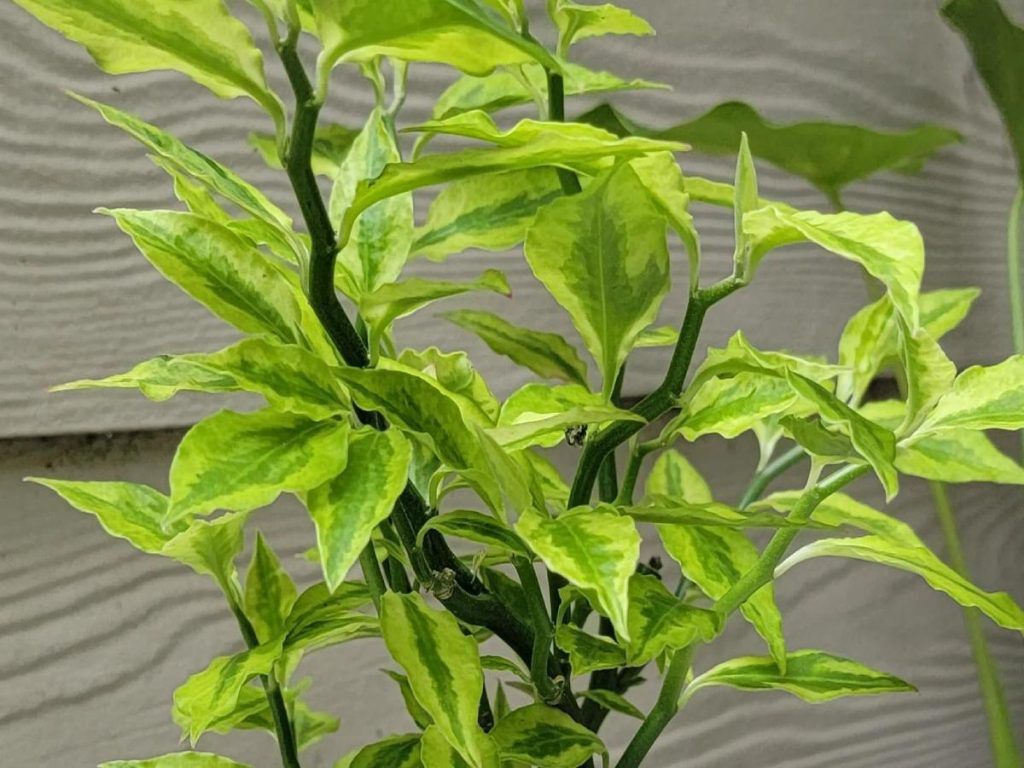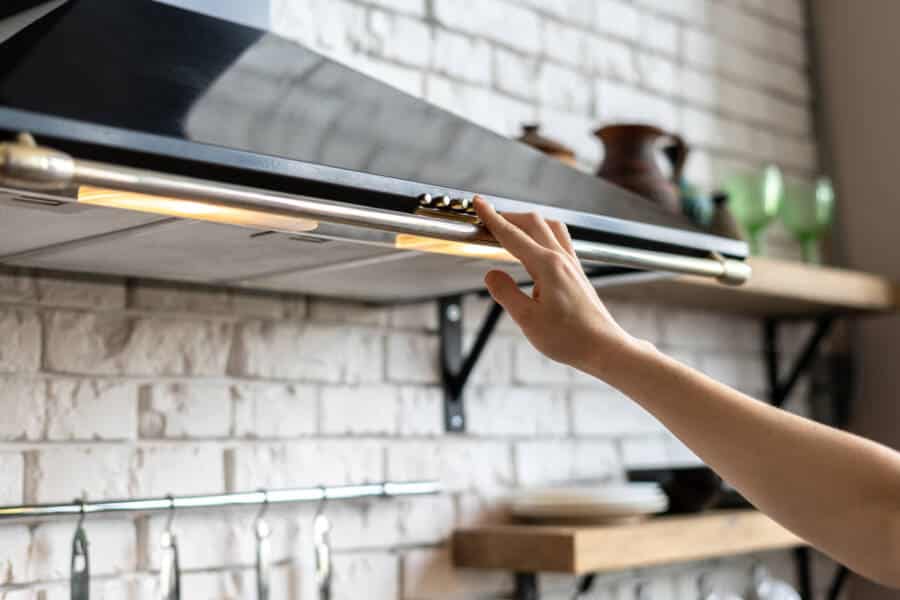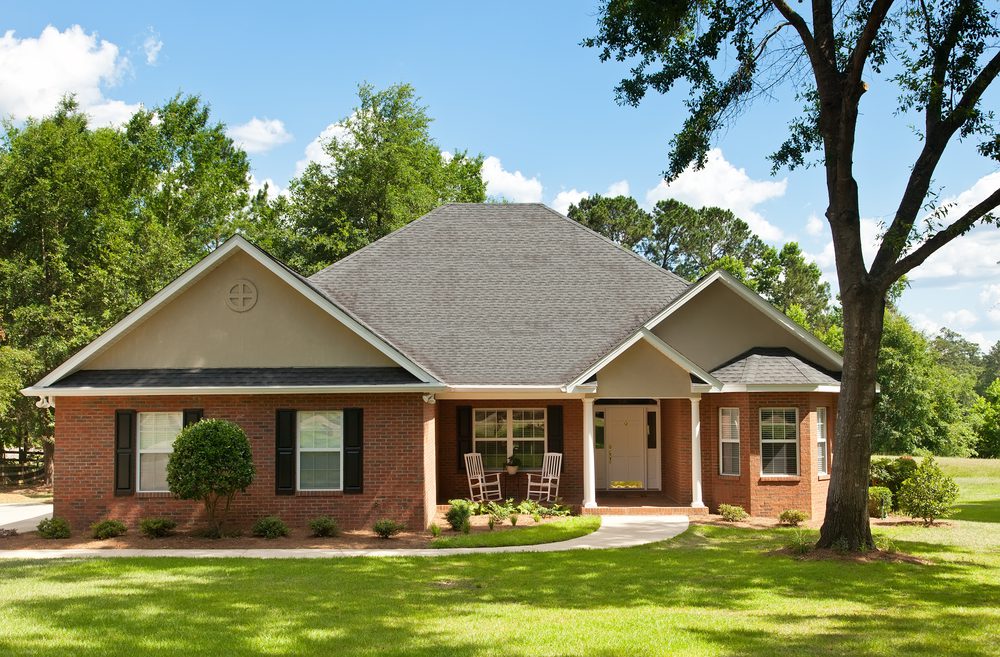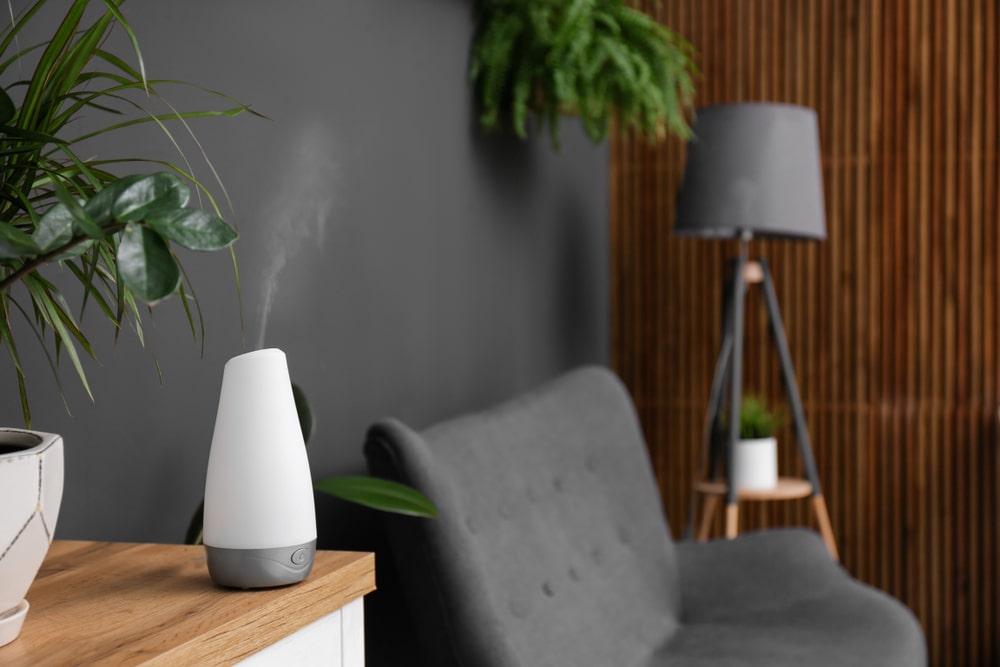The Devil’s Backbone plant is a succulent with a unique appearance and striking appearance. If you love growing houseplants, you will fall in love with this interesting plant.
Let us take a look at how to grow, care for, and propagate your devil’s backbone.

What Is the Devil’s Backbone Plant?
Devil’s Backbone also known as Pedilanthus tithymaloides. This hardy member of the Euphorbia genus is native to the American tropics but can be grown in zones 9–10 in homes. With its spiky appearance and sinister name, this plant is perfect for adding a touch of evil to your space.
This plant is made up of thorns on thick stems. If you’re not careful when handling it, those spikes could do some damage!
Like all Euphorbias, the Devil’s Backbone plant is part of the spurge family and grows best in well-drained soil. However, it does make a great houseplant if given proper care – just be sure to remove any excess water from time to time.
The flowers on this plant are actually bracts, or modified leaves—meaning that they don’t actually have flowers inside them! Instead, they give off a beautiful color as they grow and change over time. Some shades may include pink, green, white, or red, making each one unique and special.
While the milky sap found on some Devil’s Backbone plants may be poisonous to some people, the plant as a whole is generally safe to handle. Just remember to wear gloves when handling it and care should be taken not to get sap in your eyes.
If you’re looking for an eerie plant that’ll add a touch of evil to your home or garden, give the Devil’s Backbone a try!
How Do You Grow the Devil’s Backbone Plant?
To grow Devil’s Backbone, start by taking a stem cutting from a mature plant. Next, insert the stem cutting into a pot of perlite and keep the perlite slightly moist. Once the stem has rooted, plant it in bright indirect sunlight.
The Devil’s Backbone does best in a place with no cold breezes and does not like to be near windows. To keep the tips of the growth from dying off, grow it indoors in a draft-free location.
The Devil’s Backbone plant likes a moist environment. So, plant it in an area with very well-drained soil. The plant should be placed in partial shade in the hotter months.
Water when the top few inches of soil feel dry and fertilize once a month with a diluted solution.
How Do You Propagate the Devil’s Backbone Plant?
The best way to propagate the Devil’s Backbone plant is by taking stem cuttings. To do this, select the best branches from the leading or principal stems and cut a length of five inches between two leaves. Remove the lower foliage from your cutting before propagation.
Propagate Devil’s Backbone plants by cutting the stem, placing it on a moist paper towel, and planting it in a cactus or succulent potting mix. The stem should be placed at the bottom of the soil bed with the bottom leaf nodes inside.
Keep your soil moist but not soggy. Avoid direct sunlight to prevent scorching of the leaves.
After three months, your new plant will be old enough to be treated as an established plant.
You can also propagate new plants from seeds. You can also propagate by air layering.
If you’re propagating by seeds, they need warm, moist soil and a warm temperature.
If you’re propagating by cuttings, keep them moist and in a warm environment.
Gathering Devil’s Backbone Plant Cuttings
To gather cuttings from a Devil’s Backbone plant, you will need a sharp gardening knife, a cup of water, and rubber gloves.
First, clean the blade of the gardening knife in hot water and then wipe it down with rubbing alcohol.
Then, sever the stem of the plant near the base and immediately dip the end of the cutting into the cup of water to staunch the flow of sap.
To avoid getting your hands covered in white, latex-like sap, wear rubber gloves while working with Devil’s Backbone plants.
Finally, set the cutting on a sheet of newspaper in a dry, airy place until it appears calloused and dry.
Rooting Devil’s Backbone Plant Cuttings
Devil’s Backbone plant cuttings need to be soaked in a moistened mix of compost and sand before they can be rooted.
To help the cuttings take root, mix a few tablespoons of rooting hormone powder with the compost.
Once the cuttings are prepped, insert the leafless end of the stem into the planting hole.
To remove any air pockets, gently firm the soil around the stem.
The cutting should start growing roots within two weeks if it’s kept in a bright but out-of-direct sunlight location at around 77 degrees Fahrenheit.
Growing Devil’s Backbone Plant Cuttings
To grow a Devil’s Backbone from cuttings, start with a cutting that is 4-6 inches long. Place the cutting in a well-lit location with temperatures that are warm but not hot.
When the soil feels dry just beneath the surface, water the cutting. The cutting should be transplanted after temperatures warm in the spring, if it is growing well.
The growing location should have full sun to partial shade and fast-draining soil. Devil’s Backbone plants can grow up to 8 feet tall and 2-3 feet wide.
To grow a Devil’s Backbone plant as a houseplant, start with a 1-gallon container. Devil’s Backbone plants are poisonous, so keep them away from pets and people
How Do You Care for and Maintain the Devil’s Backbone?
Devil’s Backbone is a succulent that needs a lot of water and fertilizer, so it is important to keep it hydrated and fertilized. You should also avoid over-watering and over-fertilizing, as these can cause the plant to grow slowly or not at all.
Water
The Devil’s Backbone needs water during its growing season, but only in small amounts. Check the soil to see if it is dry before giving the plant water; it needs no more than two inches of moisture.
The plant is hardy and doesn’t need much water for most of the year, but it needs water during its growing season. It is necessary to water the plant in the morning during all seasons except winter.
It is necessary to see that the soil is dry between drinks because water logging causes roots to rot.
Light
The Devil’s Backbone needs plenty of sunlight to stay healthy. It is best to place your plant in front of a window that has blinds or a light curtain so you can control the amount of sunlight it receives.
During the fall and winter months, allow the plant to have a little more direct sun throughout the day as the sun’s rays are not as intense during this time.
Soil
This plant needs well-drained soil in order to thrive. The mix for the soil should be 80% gravel and 20% cactus mix. You can add sandy soil to the planting hole to help with drainage.
French drains can be used to help water drain away from the soil and into a nearby body of water.
Temperature and Humidity
According to the research, the Devil’s Backbone plant prefers temperatures between 60 and 70 degrees Fahrenheit and can withstand temperatures up to 80 degrees Fahrenheit.
The plant is also tolerant of low and average humidity levels. If your Devil’s Backbone doesn’t have a warm environment, it is recommended that you bring it inside when the temperature drops below 50 degrees Fahrenheit.
The plant needs a humidity level of 50%, and you can increase the humidity by misting the leaves and stems with water upon watering.
Container
To care for the Devil’s Backbone plant in a container, choose an absorbent clay pot with plenty of drainage holes. This will prevent the roots from sitting in standing water.
The plant also needs to be watered regularly, about once a week. Fertilize the plant every two weeks with a half-strength solution of all-purpose fertilizer.
Fertilizer
The fertilizer used for the Devil’s Backbone plant should be rich in nitrogen and phosphorus. Phosphorus is essential for succulent roots, which are vulnerable to root rot.
Nitrogen is important to helping plants grow quickly and healthy. Most of the time, use diluted liquid fertilizer to feed the Devil’s Backbone plant when it is growing.
Do not overfeed the plant with fertilizer, as this can accumulate dangerous salts in the soil and destroy the plant.
Pruning
The Devil’s Backbone Plant produces poisonous sap, so be sure to have the appropriate protection when pruning it.
You’ll want to prune the plant to keep it from growing too long and to remove any dying or yellowing foliage.
Remember that this plant produces poisonous sap, so wear goggles and gloves when working with it!
To avoid transmitting fungal or bacterial infections, always use clean garden shears when pruning.
Make sure to cut correctly when pruning to avoid stem damage.
Repotting
The Devil’s Backbone Plant needs to be repotted every two years in order to keep the plant healthy. To repot, tie the stems of the plant together and remove them from the pot.
With a knife, loosen the root ball and lay the plant on its side. Add new potting mix (50:50 cactus mix and pumice) into a new pot, ensuring that the succulent will fit snugly when placed in it.
Add some compost to the mix and water thoroughly. Place it in a bright location and allow it to dry before adding more water.
Pest and Diseases
The Devil’s Backbone plant isn’t too susceptible to pests and diseases, but there are a few that can hurt it. To reduce the chance of pests infesting your plant, use neem oil and dilute the insecticide.
Keep your plant healthy by keeping it pest-free and well watered. To repel pests, feed your plants and keep them healthy. To treat infestations, use chemical pesticides or rub alcohol on the infected area.
For organic pesticides, neem oil is a systemic pesticide that gets into the plant and poisons it.
Hot pepper spray is quite irritating and effective against pests infesting succulents.
Garlic spray is a great way to protect plants from pests and diseases.
Always spray a small part of the plant with the pesticide before spraying the whole plant.
Be careful when using contact pesticides, as root rot is a common disease that affects this plant. Root rot is an indicator that the plant may be affected by another disease, and reducing pesticide concentration can help prevent further damage.
Devil’s Backbone Plant Care FAQs
Where Should Devil’s Backbone be Planted in the Garden?
The Devil’s Backbone plant likes a moist environment. It does best when planted in a shady spot where it can get shade during the hotter months and keep water. It will also need some sunlight to grow appropriately.
What Are the Benefits of the Devil’s Backbone Plant?
Devil’s Backbone is a plant that has been used for centuries to treat a variety of health concerns. The plant is believed to help improve joint health, reduce inflammation, and improve circulation. The plant is also used as an insect repellent. Some of the benefits of this plant include:
Low Maintenance:
Devil’s Backbone plants are not demanding and do not require a lot of care.
Air Purifier
In addition to being easy to care for, Devil’s Backbone plants are also air purifiers. They remove toxins from the air, making them an ideal choice for nonsmokers.
Medicinal Plant
The Devil’s Backbone plant is a low-maintenance succulent that has many medicinal properties. It is native to South Africa and has been used for centuries in traditional medicine.
The plant is known to help heal bones, tendons, and ligaments. It is also effective in treating joint pain and preventing osteoporosis.
Adaptive
The Devil’s Backbone plant is an adaptive plant that can grow in most environments. The plant is popular because it can adapt and survive in many different conditions.
remedies. Despite its rough appearance, this plant is low-maintenance and does not require much care.
Can I Plant Devil’s Backbone Indoors?
The Devil’s Backbone plant is often grown indoors because it prefers a moist environment. It can be grown indoors in containers that are kept moist and in a shaded area.
The Devil’s Backbone can be planted indoors in pots that are kept in a shaded patio area. You can also use a sunny window to grow this plant indoors.
Can I Grow Devil’s Backbone Outside?
The Devil’s Backbone can grow outside in the summer in USDA hardy zones 9, 10, and 11. However, sun scorching and dehydration are risks when cultivating this plant outdoors.
To avoid damage to the plant, keep it away from heating and air conditioning units and vents.
Can I Propagate Devil’s Backbone in Water?
Yes, Devil’s Backbone can propagate in water. However, it is important to keep in mind that the roots will not grow very deep, so it is best to grow Devil’s Backbone in containers that are at least six inches deep.
It can be propagated in water, but it is not a recommended method. Propagation in water can lead to root rot and other problems.
How Do You Know when the Devil’s Backbone Is ready to Harvest?
You can tell that the Devil’s Backbone plant is ready to harvest when the cones change color from green to a red or purple color. Once the cones are fully colored, cut them off the plant and dry them out.
You can grind them down and use them as a spice. You can also use the Devil’s Backbone plant to make tea. The leaves are aromatic, and they can help soothe digestive issues and upset stomachs. You can also use the leaves to make incense.
Final thoughts
The Devil’s Backbone plant is a beautiful and interesting succulent that is easy to care for. This plant is a great addition to any succulent collection.
With proper care, this plant can thrive indoors or outdoors. If you are looking for a plant that is easy to care for and propagate, the Devil’s Backbone is a great choice!







